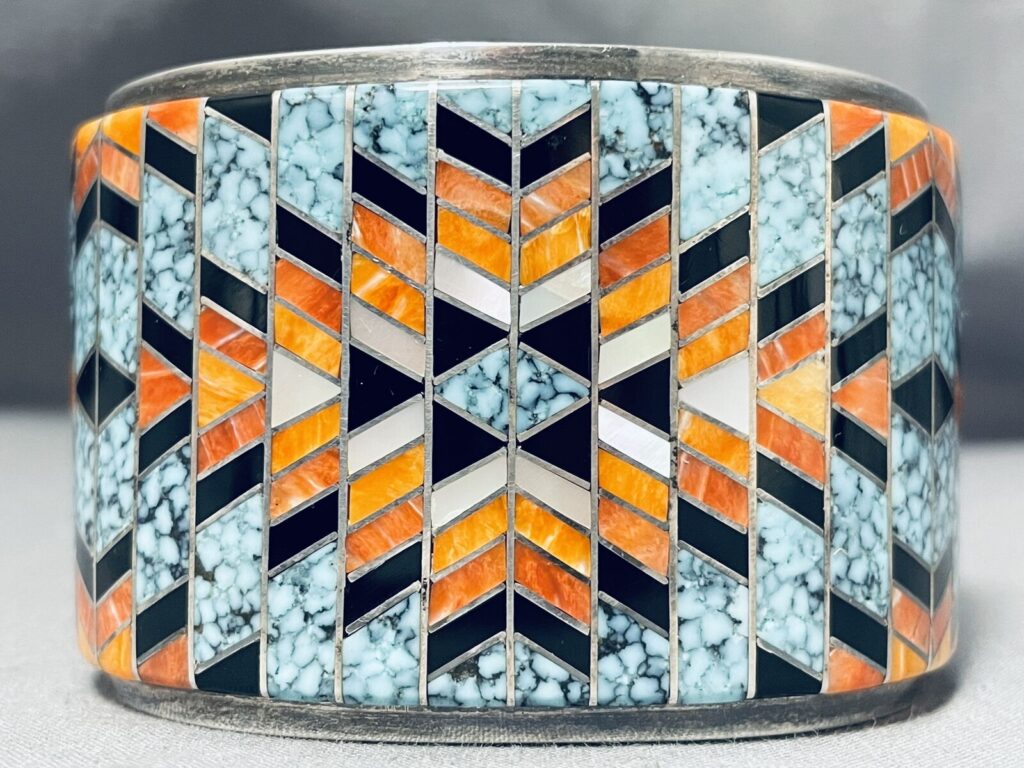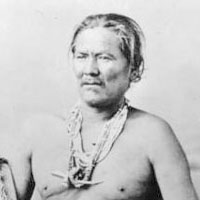The Navajo
Native American People From The Southwestern United States
The Navajo called themselves “Dine” what means “the people.” Their ancestors have been hunters from the North travelling in small groups into the Southwestern United States approximately 500 to 800 years ago.

Navajo History
The Navajo tribe is one of the largest Native American tribes in North America. They are culturally and geographically spread out over a large area, and their territory spans parts of what is now known as Utah, Arizona, New Mexico, Colorado, and California. The Navajo are a part of the Athabascan-speaking peoples who were originally from the northwest region of North America. Today an estimated 350,000 native Navajos are living in the United States alone.
It is divided into several groups, also referred to as clans. The ones considered to be the original Navajo group (also called the “Dinee”) are the Naakaii or “Long-haired People.” They were followed by another group of people known as the Tinde, who eventually became a part of the Diné and were known as “the Black-eyed People.” The other two groups who joined the Dinee were the Yeiitsaa or “Fat-legged People” and the Aniih or “Close-uped People,” both believed to have arrived from an area in the northern part of present-day New Mexico. The tribe’s language is classified as Athabaskan, a giant Na-Dené language family branch. In terms of population, it is one of the three most prominent Athabascan languages.
The Navajo Heritage
They have a rich heritage and culture. They have a significant religious presence and are mainly monotheistic with complex mythology. The creation story of the tribe, entitled Monster Slayer (aka “Kitabi’ Tsé Dine” or “Destroying the Monster”), is an essential part of their traditional religious beliefs.
The Dine or Navajo people have historical accounts of one or more great drifts, covering thousands of years. One of their primary accounts is a tale of the Alkaki (aka T’iisda), which means “The First Ones.” It tells that the Alkaki (meaning: “paint-faced”) were visitors from another world who came to the north. Their leader was Tsé Dine (“The Monster Slayer”). His people sent him to destroy the monster “Tsé Tuna,” which translates as ”Monster Slayer” in English, but it is an ancient Navajo god. After he had slain the monster with his mighty shield, it is said that he traveled to the four sacred mountains located in Navajo folklore, including Mount Blanca (in present-day Colorado), Mount Taylor (in present-day New Mexico), Hesperus Mountain, and San Francisco Peak. They also believe that their people emerged from the spots sent to Earth by the Sun and Moon.
The tribe shares other mythological creatures and characters with Native American tribes in general. These include the Tsé Tuna or Monster Slayer, the Tsé Aste or Sun, the Tai’ya or Water Goddess, the T’isda or “Two-Crow,” the Deestes or Earthmaker.
The tribe’s language, the most widely spoken Native American language in the United States, is one of six languages indigenous people still speak in Arizona. Navajo has from 750 to 1,000 fluent speakers, and about 25 percent can read and write it. It is an unwritten language. The language has about 500 words for land and water and animals, plants, and other things. There are also several terms in the tribe for lightning and thunder sounds or concepts such as illness, death, or dreams. The word for “red” is “izh.” For “blue,” it is “aké.”
The consonants and vowels are combined to create the sounds of speech. According to linguists, one of the most critical aspects of the tribe is its many parts of speech, including nouns, verbs, adjectives, and pronouns.
They also have a rich history in art and decoration. Their adobe architecture is unique to North America and has been used for hundreds of years. It is believed that they have been using it since around 800 AD. Navajo pottery is also a significant part of their culture. They have been using it for almost two thousand years and have learned how to create utilitarian, ceremonial, and artistic pieces from their ancestors.
Their weavings are also a prominent part of Navajo culture. The most famous of them all is the intricately designed Chief’s Blanket. It is made with luminous dyes representing the different seasons, white for winter and yellow for summer. The Chief’s Blanket also has many other symbols and designs that reflect the people’s worldview.
The famous Navajo “Chief’s” blankets are woven on a loom by Navajos, and some have been taken to museums for archiving. The weavings, made with yarn dyed with natural dyes, depict their history’s symbols, patterns, and cultural views. These blankets are considered highly valuable, as each one is classified as an original piece that craftswomen cannot replicate.
Navajo Jewelry – A Long History
Navajo jewelry has been an essential part of their culture for centuries. The jewelry is not just aesthetic; it also has a functional purpose of keeping evil spirits away – a story that explains Navajo jewelry about how evil spirits are kept out. The value of Navajo jewelry is often related with mystic stories and fascinating tales.
The story’s origins date back to 1864 when there was a drought that killed many horses and sheep for food for the people. The Navajo god of the Earth, Yolkai Estsan, sent the god of death to take care of the situation. The sickness spread and killed many more people, and there was no way to stop it. While this was happening, a medicine man was given the power of the gods. He asked for a dream where he could stop this plague. This dream had instructions and showed him how to create pendants to protect against evil spirits. When he awoke, the medicine man went to work. He made what he had dreamt about and gave them to the people. The pendants worked as they were supposed to and protected the people from evil spirits that could cause sickness.
The pendants were created using turquoise, which is a strong spiritual stone. Turquoise is said to protect against negative energy, emotions, and supernatural powers. Turquoise also has healing properties. It can heal physical wounds, emotional pain, and spiritual problems.
Other metals used in their jewelry include silver, brass, and gold. The colors of the metals in the jewelry that have been used are red, white, and black. Those colors are said to keep evil spirits away and to support each other on a spiritual level. Some stones have been used as well, such as obsidian (black glass), obsidian spider (glass cobwebs), coral, turquoise, jet-black tourmaline, black agate, and jet-black gemstone turquoise.
Navajo Turquoise Jewelry
Turquoise jewelry has multiple uses. For example, they gave a light blue turquoise to the Apache people. This turquoise necklace was given because it is said to make a person more talkative and quiet at the same time.
Navajo jewelry shares many similarities with other traditional styles of American Indian jewelry. Some of its roots can be traced back to Native American cultures of the Great Lakes region, specifically the culture of the Northern Plains Indians. There are multiple similarities in designs, materials, and techniques used in Navajo jewelry and other Great Lakes Native American people. This is due to the diffusion of Native American cultural practices into the Southwest and Western United States.
Navajo jewelry has a long history of over four hundred years. It has been shaped by the ever-changing culture and traditions that have evolved from the original Pueblo people. The jewelry is used for many different purposes, which goes back to the many purposes for which turquoise was selected to make different styles of jewelry.
The jewelry features a variety of different styles that have evolved. The styles include earrings, necklaces, bracelets, rings, and pendants. The jewelry is made using different materials for many of the designs. Some materials are made from silver, bronze, and gold along with turquoise. The colors used consist of red, white, and black, which corresponds to the colors used in traditional Navajo clothing to protect against evil spirits.
Navajo Jewelry “Americas Most Beautiful Jewelry”
Famous Navajo People
Chief Manuelito or also called Hastiin Chʼil Haajiní what means Man of the Black Plants Place lived from 1818 to 1893. He was a very important leader of the Diné people.

Chief Manuelito
Hastobíga was a Navajo medicine-man living late 19th century/ early 20th century.

Hastobíga, Navajo Medicine-Man
Interested in Building a Navajo Art Collection?
It’s not so easy to build a great collection of Navajo Artwork. Many people think about buying Native American Jewelry without really going into detail: what is the purpose of this collection? What is the budget? Why do I want to achieve personally? You really better ask yourself those questions before you start collecting.